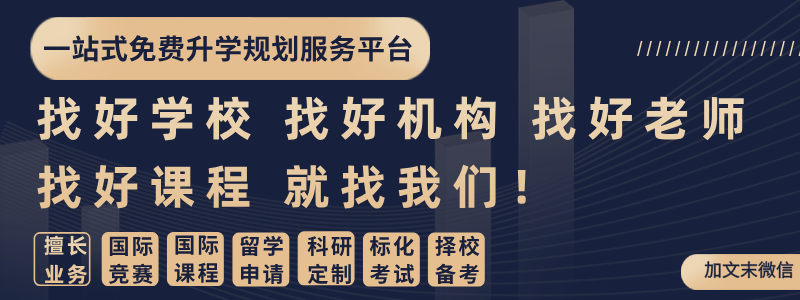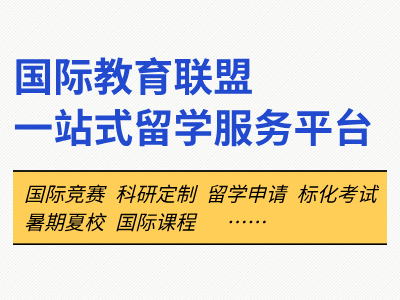在准备美本申请文书时,不少同学都会卡在“写什么”上。
如果你经历丰富,反而可能因为素材太多,不知道该从哪里下笔;如果你觉得自己的生活平平无奇,又常常担心拿不出能打动招生官的故事……
这时候,看看其他人是怎么写的,会有意想不到的灵感!
其实很多优秀的文书并不讲什么轰轰烈烈的大事件,而是从生活中最不起眼的小细节切入,反倒是那些平凡琐事背后的思考和感悟,更容易引起共鸣,也更能打动人心。
约翰霍普金斯大学2028届录取学生的6篇优秀文书范例,就非常值得参考,除了文书以外,还附带招生官的点评!
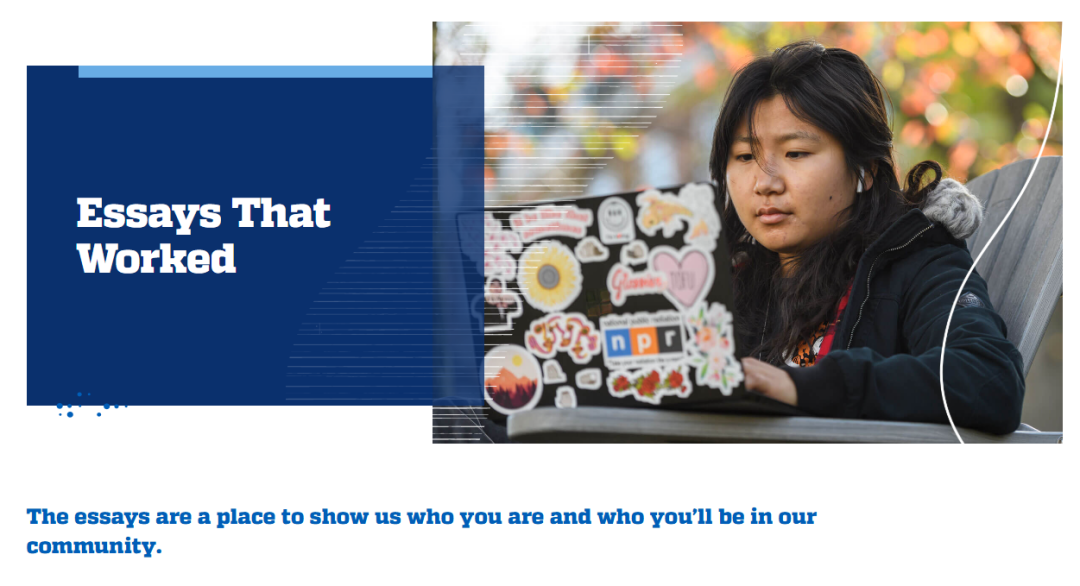
今天老师先带大家看看其中3篇,另外3篇会在后续为大家更新~
The Art of Imperfection
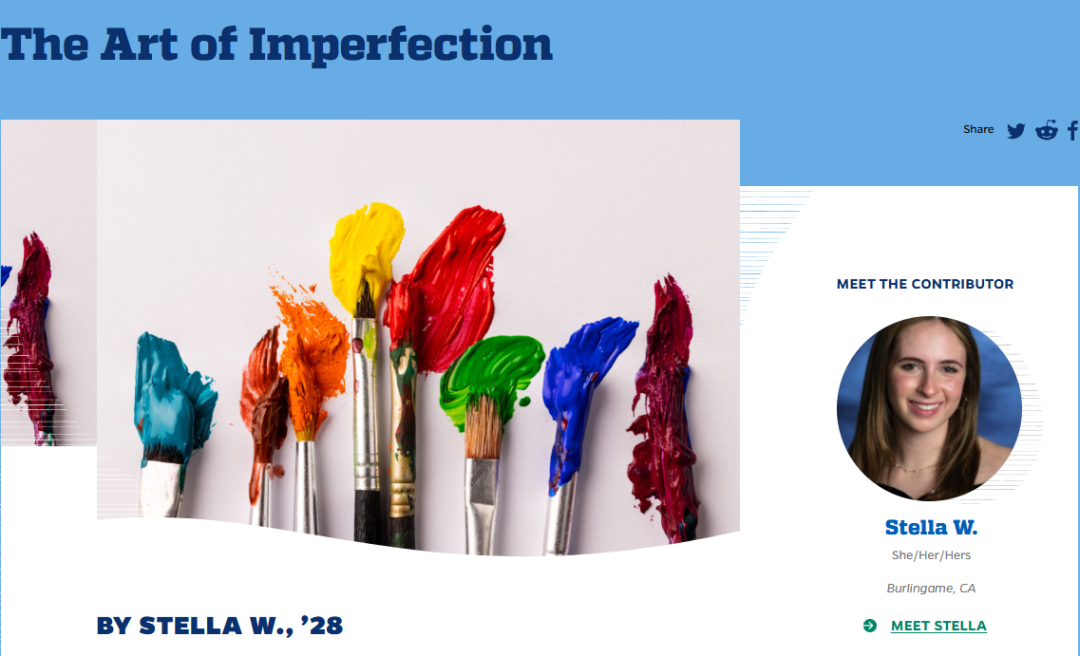
是那一抹泼洒在木桌与吧凳上的绚丽色彩,第一次吸引我走进那家紧邻父母最爱超市的本地美术教室。那年我才七岁,但我已经能读懂那个醒目的红色招牌:“绘画课程”。我透过玻璃窗望进去,看着学生们把松节油涂抹在空白画布上,用鲜艳的底色打出草图,再用细小画笔勾勒最后的细节。我被迷住了。
在真正开始上课后,我爱上了这门精细而令人满足的艺术。很快,绘画和素描便占据了我所有的闲暇时间——我全身心投入于将我观察到的动物、人像、风景和物体的形状与色彩,忠实地还原在画布上。那些年,我沉浸在创作的快乐中,老师也常常夸我进步神速。但我当时并不知道,这份对技艺精进的渴望,会让我踏上一条充满挫折的旅程。
我至今仍清楚记得那次挣扎的情形:我怔怔地盯着那只木质手模型许久,却始终无法顺利描绘纸面上的明暗、光影和结构,内心只剩下挫败、失望与无助。为了准确地画出这只手,我已经反复尝试了几个小时,但努力似乎毫无意义。那天我带着满腔的不甘离开了教室,也首次感受到艺术带来的痛苦。年纪尚小的我,不知如何面对这份负面情绪。
休息了几天之后,好奇心驱使我再度尝试。这一次,我接受了一个现实:我想表达的画面,可能无法在第一次,甚至第二次、第三次就成功地呈现出来。经过几周多次修改,这幅手的素描终于令我满意。并不是因为它是我最精湛的作品,而是因为这是我第一次直面一个真正的难题,并最终战胜它。这幅画也成为我最喜欢的作品之一。
真正需要跨越的障碍,并不是那只手本身,而是继续坚持下去的勇气。这场与素描的较量,并非能力的考验,而是对耐心与毅力的考察。
去年夏天,我在加州大学伯克利旁听了一门数据科学课程,同时为一位研究生导师实习。作为唯一的高中生,我身边全是工程系的大学生,这段经历远远超出了我以往在学校接触的范畴——以前从未接触的数学概念,一种全新的编程语言。一开始做作业时,我常常一坐就是几个小时,依旧无法入门。我开始为自己的学习速度过慢而感到沮丧。
但我提醒自己,这并不是我第一次被热爱的事物所挑战。就像过去无数幅画作一样,我坚持做实验,尽管我知道它们大概率不会在头几次就运行成功。但在完成了几项实验之后,问题开始变得熟悉且易于处理,最终,我还运用所学技能建立了追踪旧金山湾区船舶排放数据的数据集。
这项工作带来的挑战,远远超过我在任何数学或科学课上经历过的,但因此也更加充实。虽然挫折令人不安,但这些挑战不断激励我迎难而上。因为它们让我坚定地相信——挑战,是成长的机会。
—— 2028届学生 Stella W.
向上滑动阅览英文原文:
The splash of color that engulfed the wooden tables and bar stools first lured me into a local art studio next to my parents' favorite supermarket. At seven years old, even I could read the big red sign: “Painting Lessons.” I peered through the studio’s glass windows and watched students smear turpentine across blank canvases, create initial sketches in vibrant base coats, and add finishing details with miniature brushes. I was hooked.
After starting the class myself, I fell in love with this meticulous but gratifying process. Eventually, painting and drawing consumed my spare time—I was committed to replicating the shapes and colors I observed in animals, people, landscapes, and objects on canvas. In those early years, I loved every moment and teachers praised my rapid progression. I didn't know then that my aspirations to perfect my skills in this craft would lead me down many roads of frustration.
I remember the struggle vividly: as I stared blankly at that wooden model of a hand for what felt like forever, feelings of frustration, disappointment, and desperation blocked any efforts to continue manipulating the shadows, highlights, and shapes on my paper. I'd spent hours trying to successfully depict this hand model, but my hard work felt meaningless. That day, I left class unsatisfied with my abilities, and distraught by this challenge. Never before had art been a source of such distress, and at a young age I didn't know how to grapple with these feelings.
After taking a break for a couple days, I found myself curious to try again. This time I accepted that what I was striving to convey on paper might not manifest itself on the first, second, or maybe even third attempt. After struggling with several different versions of this drawing over weeks, I finally felt satisfied with my depiction of the human hand. Not because it was the best demonstration of my artistic ability, but rather because tackling a skill that challenged me so thoroughly gave me pride unparalleled by my other works. It became one of my favorite pieces.
The hurdle I needed to overcome was not the task itself; it was being able to continue working at something that didn't come easily. My struggle to illustrate a hand was not a test of my abilities, but rather of my patience and perseverance.
This past summer, I audited a data science class at UC Berkeley while I interned for a graduate researcher. The only high schooler surrounded by college engineers, I was stretched beyond anything I'd delved into in high school: math concepts I had never seen before, a new computer programming language. When I first started tackling the problem sets, I often found myself staring at the page for hours. I started to get frustrated that I was not grasping new concepts fast enough to efficiently work through the course.
But I reminded myself it was not the first time I found myself challenged by something I was passionate about. As with many art pieces in the past, I continued working on the labs with the understanding that they were likely not going to successfully run after my first few—or many—attempts. After completing a few more labs, problems started to become more familiar and easier to handle, and eventually, I started applying the skills I developed in the course to create real data sets that tracked boat emissions in the Bay Area.
This work challenged me more than any math or science class had ever challenged me in my academic career, and as a result the work was that much more rewarding. As frustrating as these challenges are, I am inspired to leap towards them, because they have instilled in me the confidence to view challenges as opportunities for growth.
招生官评语
在这篇文书中,Stella深入讲述了自己在艺术道路上的探索与挑战。她回顾了童年时对绘画的热爱,以及随着年龄增长,这段关系如何发生变化。
Stella展现了自己如何通过接纳不完美、耐心坚持,来拥抱这门技艺。她将这些经验延伸至全新领域的挑战中,表现出她能将困难视为成长的机会。
在JHU,这种能力将帮助她飞得更高——在这里,她将迎接更多全新的同伴与机会,在动态环境中持续学习与成长。
Finding Purpose in Trivial Projects
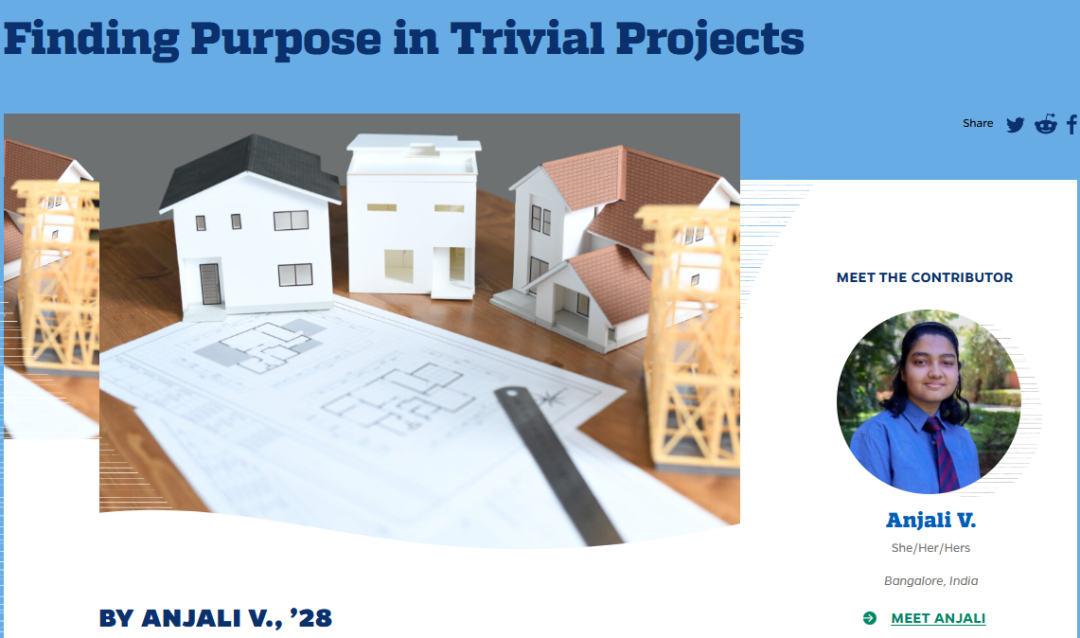
有时候,一块用作包装的木板会让我心生一念:“这个拿来做一个立体模型的底座一定很棒。”随后,灵感往往来自我常去的一栋楼、一条街或某个房间 —— 一个充满细节但又不会令人眼花缭乱的地方。将一个场景的复杂细节缩小重现的挑战让我兴奋不已,而设想这个场景被微缩后的模样,也让我感到无比愉悦。
2020年夏天,我手里拿着一块中密度纤维板,那次灵感来源正是我自己的家。虽然建造一栋刚搬进去的房子的微缩模型看起来既不必要又有点浪费时间,我却在接下来的三个月里,坐下来,带着颜料、木板,还有从未拥有过的充足时间,认真投入到这个我真正有动力完成的项目中。没有其他事情可做时,我开始测量、搭建、组装 —— 一块一块、一层一层地构建我的房子。完成后,我对这个作品的用途一无所知,亲朋好友也对我为何如此费力感到困惑。“这做得真棒,但这是你的学校作业吗?”他们问。
尽管这看起来没什么意义,我还是继续做了更多微缩模型——我们的餐厅、我家那条街、我的自行车,甚至是我的垃圾桶。每个项目都带来了全新的挑战。我想为那辆纸板做的小自行车加上能运作的齿轮,但该怎么做呢?
虽然一再犯错让我很沮丧,但我最终找到了办法,用钩针编出能产生足够摩擦力的“链条”带动纸板齿轮。每完成一个项目,我都得学会使用一种新材料或胶水—— 有时候作品会散架,颜料也会剥落。这些问题正是项目最有趣的部分:解决一个又一个“微缩难题”的过程带来的是一种纯粹的快乐。而我也特别以打破“微缩模型脆弱”的刻板印象为荣,尽可能让我的作品坚固耐用。虽然有时候面对一个可能耗时数月的项目会想要放弃,但我对制作模型的着迷始终未减,即使我后来比2020年忙碌了很多。
当我思考为何“制作微缩模型”成了我的日常,我渐渐意识到它带给了我很多收获。在缩小每一个场景的过程中,我意外地经历了大量的计算与解决问题的过程。面对结构墙放错位置或比例失衡的元素时,我必须权衡解决方案、判断何时重头再来。即便是最小的作品 —— 那个微缩垃圾桶,也出于对脚踏机制的好奇而诞生。制作模型让我更关注细节,也让我学会寻找让一个对象变得迷人的关键元素:在尝试还原新家的过程中,我更加深入地了解了它。
如今,当我走在熙熙攘攘的街道上,总会情不自禁地注意到 —— 那道铁丝围栏竟像极了一张松散的针织网,或是一根掉落的树枝也许就是完美的微缩“树木”。奇妙的是,这种在创意中寻找解决方案的思维模式,也回到了我在计算生物学实习中从事的研究与编程工作中:观察模式,把大问题拆解成微小步骤。
最重要的是,在一块块迷你砖块上作画、雕刻米粒大小的雕像时,我意识到自己凭着一股决心能完成多少事。每个新项目开始时,都没有明确的完结日期,细节上的精雕细琢也常常令人崩溃,尤其是在它们“看起来不对”的时候。但当我把一个微缩作品送给亲友时,正是其中所蕴含的耐心与坚持,传递了我对他们的深情。
如今,那些微缩模型或许已在书架上积满灰尘,但每一个“微不足道”的项目,都是我无数小时努力的成果 —— 它们见证了我的耐心、付出,以及这一切过程中我所获得的一切。
—— 2028届学生 Anjali V.
向上滑动阅览英文原文:
Occasionally, a wooden board that comes in as packaging makes me think, “That would make a great base for a diorama.” Then, there's a concept that comes from a building, street, or room I'm frequenting, someplace that is brimming with interesting detail yet not overwhelming. The challenge of shrinking down detail in a scene excites me, and it's also delightful to imagine what the scene would look like miniaturised.
During the summer of 2020, with a piece of packaging MDF board in hand, that place happened to be my own home. Although a scale model of a house I'd just moved into seemed frivolous and unnecessary, I sat down with paint, board, and more time than I'd ever had over the next 3 months to work on something I felt genuinely motivated to complete. With nothing else to work on, I measured, constructed, and assembled the house—piece by piece, floor by floor. When I was done, I still had no use for my creation, and friends and family were confused as to why I'd worked so hard on it. “This looks great, but did you do this for a school project?” they'd ask.
Although it seemed trivial, I made more miniatures—of our dining room, my street, my bicycle, and even my dustbin. Each project came with its own challenges. I wanted to make functioning gears on a tiny cardboard bicycle, but how? I'd make frustrating mistakes, but I found my way, crocheting bicycle chains that created enough friction to pull cardboard gears. With every project I completed, I had to learn how to work with a new material or adhesive—sometimes, pieces fell apart or paint would flake off. The issues were what made projects fun; there were simple joys in solving these miniaturised problems, and I took special pride in subverting expectations of fragility by making pieces as sturdy and durable as I could. Although it was sometimes tempting to forfeit projects that went on for months, my inexplicable fascination with making models continued even as I became much busier than I had been back in 2020.
As I wonder why miniature making has become such an integral part of my routine, I've begun to notice just how much I've gained from it. In scaling down each scene, there's been an unanticipated amount of calculation and problem solving. In working through misplaced structural walls or disproportionate elements, there’s solutions to be weighed and decisions to be made about when it's time to start over. Even my smallest project, the miniature dustbin, was made out of curiosity and a desire to recreate the pedal mechanism. Miniature making has given me a greater attention to detail, as I try to look for details that make a subject appealing: I learnt much more about my new home in an attempt to recreate it. As I walk along a busy street, I can’t help but notice that wire fence bears a striking resemblance to a loose knit, or that a fallen twig would make the perfect mini tree. Strangely enough, searching for solutions in these creative places floods back when I work on research and programming for my computational biology internships, observing patterns and breaking down problems into miniature tasks.
Most importantly, in painting individual bricks and sculpting rice-grain sized statues, I've realised what I'm capable of accomplishing out of determination. Each project I begin has no foreseeable end date, and intricate detail can become just as excruciating when things don't seem to work out. When I gift a miniature to family or friends, it's the patience and resilience involved that expresses how much I care.
My dioramas may be collecting dust on a shelf now, but each ‘trivial’ project is still the result of working hours—a testimony to patience, effort and everything else it has helped me achieve along the way.
招生官评语
Anjali用她的文书分享了她制作微缩模型的经历。她从建造搬入新居的模型开始,从此开始以更加细腻的视角观察世界。我们看到,这份热情影响了她生活中的方方面面。
Anjali反思了她从微缩艺术中获得的乐趣与耐心,而这份自省也帮助招生委员会看到了她面对问题时的策略思维和坚韧精神。我们有强烈的预感,她将在JHU找到归属 —— 在这里,学生通过多角度思维创造解决方案。
Korean Sticky Notes

我们卧室的门上贴满了便利贴,每一张都写着一个富有意味的韩语单词。打开门时,我会一边走一边朗读它们。
Hal-in:折扣。
我妈妈曾经笑着说:“Nancy,有时候我觉得你才是大人,我反倒像个小孩。”
说得没错。我还是个孩子,却已经过着“双重生活”:既是女儿,又是妈妈锲而不舍的理财顾问。每个星期六的早晨,我们都会去 H Mart 超市,寻找各种Hai-in(折扣)商品,一边精打细算,一边将选中的物品放进购物车。五个芒果 $9.99,草莓 $5.50?这是通货膨胀的经典写照。换成打折的苹果吧。至于巧克力Pepero?不行。到收银台时,我会拿出精心收集的优惠券,一张张地刷,看着价格一次次降低,我无比满足。
Jeonlyag:策略。
回过头来看,妈妈那句话道出了一个不可否认的事实。我们从小家境拮据,我很早就明白生活中每一分钱都得省着花。那时妈妈失业了,四处奔走找工作,努力赚钱来支付我们两居室的租金。为了减轻她这个“独自撑起整个家”的新角色的负担,我觉得我有责任带着Jeonlyag(策略)去看待每一笔支出,确保每一块钱都用在刀刃上。
Eon-eo:语言。
每天我们都在叮当作响的计算器声中算着房租和各种开销,几乎把生活的每一部分都量化成了数值与效益。然而,当我试图重新和妈妈谈谈那些“无法量化”的事,比如感受、回忆或家庭,我却发现自己张不开嘴,说不出话。尽管我在一个双语家庭中长大,但随着家庭经济状况的恶化,我逐渐变成了妈妈的财务顾问与英文翻译,我的韩语能力却停滞不前。于是我萌生了一个愿望:我想跨越这道Eon-eo(语言)上的鸿沟,了解妈妈的成长经历,也更深入地了解我的根与文化。
从最基础的学起,我开始听一些本应是幼儿园小朋友听的歌,比如《Pororo》的旋律,把韩文字母刻进脑海。我照着妈妈的字迹,一笔一画地模仿着写韩语单词,把它们抄在便利贴上,贴满了卧室的门。每天的生活中,我会记下所有不认识的新词,不管是妈妈播放的80年代老情歌,还是韩语广播电台的新闻。随着时间推移,越来越复杂的词汇、各种俗语与现代俚语慢慢延展到我们家的墙壁上。
Daehwa:对话。
随着这些便利贴越来越多,我和妈妈的Daehwa(对话)也变得更丰富。在 H Mart 逛超市时,我会请她讲讲她小时候在首尔的故事。她讲述自己小时候光顾街头小吃摊的经历,指着货架上的怀旧零食说那是她最爱的安慰食物。渐渐地,每一张标价签都变成了妈妈回忆的片段。我也越来越想用她的视角看世界:巨峰葡萄、鱿鱼干,还有贴着韩元与美元双标价的80年代漫画广告牌——它们成了我双重文化身份的缩影。货架背后,藏着的是一段段无法用数字衡量的经历、瞬间与情感。
Tamgu:探索。
那一张张便利贴,不只是韩语单词,它们承载着回忆,提醒我:人生太短暂,不能只透过价格标签看世界。学习韩语让我在每一次逛超市的旅途中重新感受到那个不被量化的世界——一个充满温暖与爱的故事世界。如今,每当我推着购物车穿过 H Mart 的各个走道,我都会重新遇见那些联结着不同背景、相隔千里的人的宝贵体验。虽然“家庭财务顾问”仍是我身份的一部分,但我正继续在人生的通道中行进,努力拓展自我Tamgu(探索)的边界。
—— 2028届学生 Nancy P.
向上滑动阅览英文原文:
A myriad of sticky notes adorn our bedroom door, each bearing a telling Korean word. Opening the door, I repeat them aloud.
Hal-in: Discount.
My mom once joked, “Nancy, sometimes I feel like you're the adult and I'm the child.”
Sure, I was a kid living a double life as my mom's unrelenting financial advisor, spending Saturday mornings marching around H Mart, seeking hal-in and calculating the cost of items making their way into our cart. $9.99 for five mangoes and $5.50 for strawberries? Inflation at its finest. Get the apples on sale instead. Chocolate Pepero—No. Unveiling my prized stack of carefully collected coupons at the register, I eagerly watched the price go down with each swipe.
Jeonlyag: Strategy.
Looking back, my mom's words revealed an undeniable truth. Growing up low-income, I understood that finances were going to be tight. My mom, then-unemployed, scrambled to find a job and worked tirelessly to pay the rent for our two-bedroom apartment. Eager to ease my mom’s sudden burden as our sole provider, I felt compelled to approach every expense with a jeonlyag, ensuring every dollar was spent to its maximum potential.
Eon-eo: Language.
As the clacking of our calculators totaling rent and various other expenses consumed our days, I realized that we had quantified almost every aspect of our life in pursuit of optimal value and utility. When I tried to reconnect with my mom on the unquantifiable aspects of our lives, my mouth went dry, unable to find the Korean words and phrases to express myself. Even having grown up in a bilingual household, my Korean eon-eo skills had fallen behind as our financial situation devolved and I transitioned to the role of financial advisor and translator for my non-English-speaking mom. I wanted to bridge this eon-eo gap and learn more about her upbringing and my own heritage.
Starting with the basics, I listened to songs much too young for my age, Pororo's catchy lyrics ingraining the Korean alphabet into my mind. My mom's handwriting served as a template as I shakily wrote down Korean vocabulary onto sticky notes, plastered along our bedroom door. I noted almost every unfamiliar word or phrase I encountered in my daily life, whether in my mom's 80s ballads that rotated through her playlist or in the Korean news radio. With time, sophisticated words and phrases, sprinkled in with traditional and modern slang, expanded throughout the walls of our home.
Daehwa: Conversation.
As my collection gradually took over our apartment, my daehwa with my mom also grew. As we stroll aisle to aisle at H Mart, I ask my mom to share her childhood stories growing up in Seoul. She recounts visiting street food tents and points out her favorite comfort snacks, nostalgic memories replacing each sticker value. I find myself racing through the aisles, eager to see more of her world through Kyoho grapes, dried squid, and advertisements of 80s manhwa cartoons, labeled in both Korean won and American dollars—a culmination of my own bicultural identity. Beyond the stocked shelves lining the grocery store lay experiences, moments, and relationships that I couldn't quantify.
Tamgu: Exploration.
Hundreds of Korean sticky notes hold memories that vividly remind me that life is too short to view the world through the lens of price tags. My journey to learning Korean helped add another dimension to our grocery excursions that re-introduced me to a world in which stories of warmth and love cannot be measured in dollars and cents. As I push my shopping cart through H Mart's aisles, I discover invaluable experiences thatconnect people of different backgrounds birthed thousands of miles apart. Now I continue to navigate the aisles of life, determined to step beyond my role as a financial advisor, though it remains a part of who I am as I continue my own self tamgu.
招生官评语
Nancy的文书展现了她年幼时肩负的责任,以及她由此发展出的探索精神。她带我们一起穿梭在 H Mart 的走道中,讲述自己如何帮助母亲,并因此锻炼出战略思维。在这些超市之旅中,Nancy逐渐通过母亲的童年记忆与语言学习,找回了自己的韩裔身份。她让我们看到了她对周围人真诚的关怀,以及那种源于好奇心与责任感的驱动力。
这些品质会帮助她在JHU茁壮成长,在这里,学生们彼此支持、欣赏多元视角,共同营造归属感满满的学习社区。


